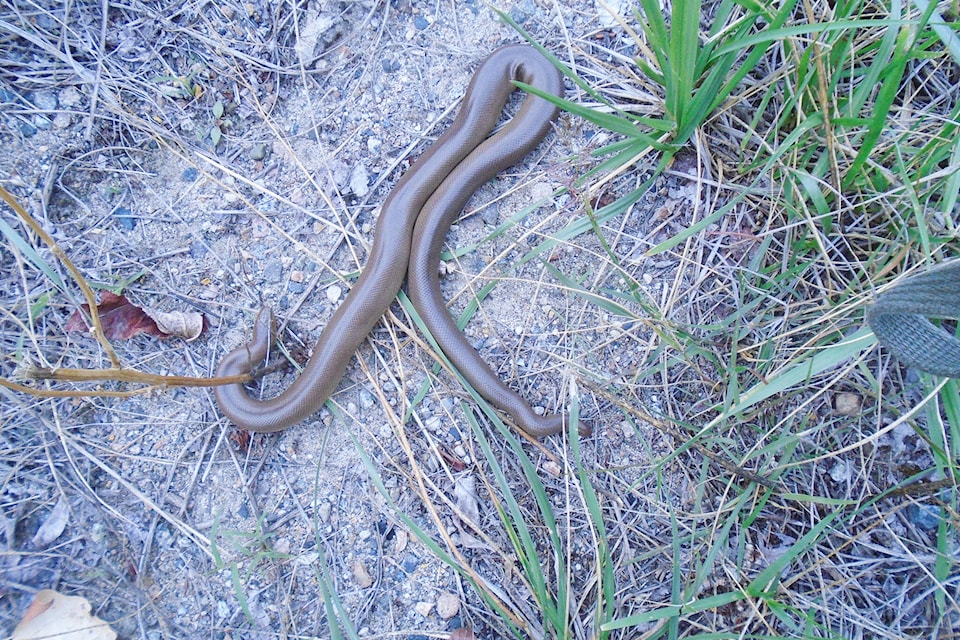Rarely does a name suit a being so well as the rubber boa.
Thick-bodied, the 35 to 80 centimetre long rubber boa resembles a rubbery tube with a slight taper at each end – similar in shape to what you’d roll out of a ball of clay.
Loose skin and many small, smooth scales combine to give the snake its rubbery appearance.
Adult rubber boas are dark olive green to brown in colour, with bellies that are pale yellow to orange-yellow.
Juveniles are small with a pinkish colour, very similar looking to an earthworm.
Rubber boas have been known to inhabit a wide variety of habitat types from grassland, meadows and chaparral to deciduous and conifer forests, to high alpine settings.
They can be found at elevations anywhere from sea level to over 10,000 feet (3,000 m).
They are not as tolerant of higher temperatures as other snake species and cannot inhabit areas that are too hot and dry, but can live in areas that are surprisingly cold, especially for a snake.
Rubber boas also spend a large amount of time under shelter, rocks, logs, leaf litter, burrows, and thus must live in habitats that can provide this, as well as adequate warmth, moisture, and prey.
It is also thought that rubber boas maintain a relatively small home range as many individuals are often captured in the same vicinity year after year, although individuals may occasionally migrate due to competition, lack of prey, or other pressures.
Read more: What you see …
Read more: What you see …
newsroom@trailtimes.ca
Like us on Facebook and follow us on Twitter
